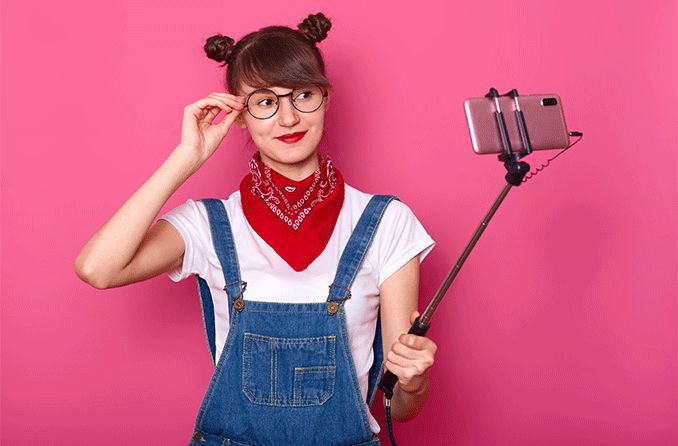Can nearsightedness be a good thing?

Is nearsightedness ever a good thing?
Although having nearsightedness (myopia) is typically seen as a disadvantage, there are some benefits that come with having a vision problem. Three of the most beneficial aspects: Scheduling routine eye exams, seeing up-close things easily and indulging in fashionable eyewear.
What is myopia?
Myopia is a type of refractive error that makes it difficult for people to clearly see people or objects that are far away. It happens if your cornea (the clear outer layer of the eye) or the lens of the eye has a curvature that is too steep, or if your eyeball is longer than it should be.
When light enters a myopic eye, it comes to a focus in front of the retina rather than directly on it, which causes faraway objects to appear blurry.
About 42% of people in North America have myopia. You have a higher likelihood of being nearsighted if one or both of your parents are nearsighted. Reduced outdoor exposure and extended near work have also been associated with myopia development.
Myopia is not reversible, but it can be managed with eyeglasses and contact lenses. Other options — such as refractive surgery (LASIK) — are available to some patients as well.
Benefits of being nearsighted
Although having myopia can feel like an inconvenience, your vision health (and flair for fashion) can benefit from it.
Being nearsighted presents an opportunity for routine, comprehensive eye exams, which may make the following possible:
Managing (and monitoring) myopia from the time it’s first detected, potentially keeping it from progressing as quickly as it would. Several myopia control strategies now exist that may slow the progression of nearsightedness.
Early detection of glaucoma, cataracts, myopic macular degeneration and other eye conditions people with myopia may be at a higher risk for developing.
Up-to-date vision prescriptions to ensure clear vision and regular checkups to maintain the health of your eyes.
Each new prescription comes with the chance to get new glasses based on your face shape.
Seeing up close can be done without glasses
While myopia makes it difficult to see distant objects clearly, it should be easier for you to see things up close. This means you don’t need glasses to read a book, scroll through your smartphone apps or perform other up-close tasks.
Eyewear serves as functional fashion
Having a refractive error like myopia opens the door for eyewear and fashion that can be both fun and functional.
There are many frame styles, colors and shapes to choose from that are vision prescription-friendly. You can even get prescription sunglasses and colored contacts to correct your vision and flaunt a neat look at the same time.
Managing your myopia
Be sure to see an eye doctor regularly to keep your eyes in great health — especially if you’re myopic. A yearly comprehensive eye exam is the best way to do this, as it can help your eye doctor identify any new problems with your vision or whether you may need an adjustment in your vision prescription.
Strategies to slow down the progression of myopia can also be discussed with your eye doctor during your eye exam. Plus, if your eye exam shows that you do need a new prescription, you can treat yourself to a cool new pair of glasses.
READ NEXT: Refractive errors and refraction: How the eye sees
Myopia (nearsightedness). American Optometric Association. Accessed October 2021.
Myopia control in children. American Academy of Ophthalmology. July 2020.
Page published on Tuesday, February 8, 2022
Medically reviewed on Friday, February 4, 2022






